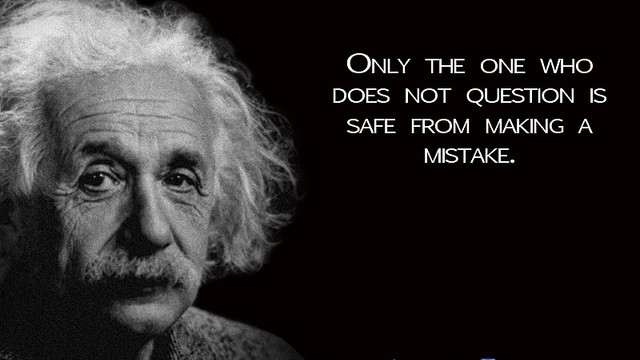Questioning Practice #3: Scaffold Student Responses to Deepen Thinking
Teachers need to plan how they will respond to anticipated student responses or comments. Teachers will respond with comments or questions, but this should be carefully planned to be able to scaffold student thinking. A teachers choice of response to a students answers can either promote thinking or shut it down. This will all depend on a teachers purpose, timing and working.
An interesting point to consider is that research shows that teachers tend to shut down student thinking when they provide positive feedback or praise. At first this seems counterintuitive, but the point is that when a teacher communicates agreement with one student’s thinking, both that student and his classmates conclude that there is no need for further thought because the teacher got the answer he was looking for.
Walsh and Sattes argue that the the and frequency of teacher scaffolding will vary based on the different forms of discussion:
a) Teacher-guided discussion - the teacher is prepared to provide large doses of scaffolding to help students develop the social and cognitive skills for a disciplined discussion. This type of discussion is best when students are first learning norms and processes of effective discussion. Teachers will come with a full arsenal of follow-up questions to direct student talk.
b) Structured small-group discussion - teachers will select specific protocols that support peer scaffolding of one another’s thinking and engagement. Examples of both of these will be discussed later.
Questioning Practice #4: Create a Culture for Thoughtful Discussion
Thoughtful discussion is a collaborative process that cannot take place in a competitive classroom where students are competing for the teachers attention and grades. Similarly, thoughtful discussion cannot take place in a teacher-centerer room with a right-answer culture. On the other hand, it does flourish in a classroom that celebrates curiosity, inquiry and discovery.
Walsh discusses three norms that are common in classrooms that promote thoughtful discussion: Purposes of questions, think times and participation.
1) Purposes of Questions
a) Use the focus question to stimulate and unlock your own thinking about the embedded issue or concept. This means that students must believe that the teacher is not looking for one specific correct answer.
b) Use the focus question to assist in zeroing in on what you know and think about the issue or concept embedded in the question. An open ended question does not mean anything goes. The entire class has to take responsibility that all participants offer logic and evidence to support their positions.
c) Ask questions when you are curios, perplexed or confused or when you need clarification.
2) Think Time
The honouring of silence is critical to a deep and productive discussion. This allows students to clarify their own thinking and to understand the thinking of others. Murray Budd Rowe (1986) identified two types of wait times: Wait Time 1 is the pause after the asking of a question, before anyone responds. Wait Time 2 is the pause after someone speaks, before another speaker reacts. According to Rowe, the recommended wait time is 3-5 seconds. Walsh recommends that as a minimum, but often a bit more is necessary to be effective. Students need to learn to value this silence.
Walsh uses the term think time in place of wait time as it connects more to the reflection that we are aiming for. Here are three norms that show students how to use this time:
a) Use think time to reflect. When someone poses a question or comment to you, use this time to reflect and think about your response.
b) Give others time to reflect.
c) Treat silence like gold. This is such an important time, where we can process what others say, rethinking our positions, or consolidate our thinking.
3) Participation
The goal is to get as many people as possible to be active participants in the discussion. Is everyone comfortable to speak? Do students encourage their peers to participate, especially the quiet ones?
a) Speak as you are motivate to speak, without raising your hand. This is a hard habit to break, but hand raising breaks the flow of the conversation.
b) Talk to one another, not the teacher. Most of us spend out years in class looking to the teacher for affirmation that our comments were good. The focus on good discussion is for students to build on one another’s ideas. Consider moving students desks into a formation that promotes this.
c) Share what you are thinking so others can learn from you. This thought is to be shared with the shy students so we give them the message that everyone’s thoughts and ideas help the entire class.
d) Monitor your talk so as not to monopolize the conversation.
e) Listen to others respectfully, asking questions to understand.
f) Encourage others to speak, particularly those who are not participating.
The main idea here is that questioning for discussion requires teachers to take on a different role for the traditional classroom. They should frame one question for discussion and then remove themselves a bit. They should not comment on each students idea’s until the classmates have a chance to do so. Similarly, they should encourage the students to critique each other before they do so.
Links to Interesting Articles:
Quote of the Day:
2. “Challenges are what make life interesting and overcoming them is what makes life meaningful.”
3. “Happiness is where we find it, but very rarely where we seek it.”
